Spotting throngs of excited tourists jostling for position at the quayside, we half-expected to see an A-list celebrity pulling up in their million-pound yacht. But the cameras were primed to catch sight of a more important visitor in this part of the world – George, the loggerhead turtle.
Kefalonia, the fourth largest Greek island, is one of the Med’s breeding grounds for this protected species and George, who’s become a local star, regularly follows fishing boats into shore at Argostoli, the island’s capital, hoping for a few scraps.
Pop down to any harbour when the fishermen arrive home and you might catch a glimpse of one of George’s friends. If you do, let’s hope it’s as accommodating as he is because it was only after affording everyone time to click away on their cameras that he slipped beneath the warm waters and swam out to sea.
It’s believed turtles can live until a hundred so it’s likely that George experienced the horrific earthquake which struck in 1953, killing 600 people and flattening around 85% of buildings.
The island’s northern tip is the only region which escaped unscathed, leaving the quaint fishing village of Fiskardo as the one place you’ll see Venetian-designed buildings from before the quake. So after strolling along Argostoli’s promenade and window-shopping along the main drag, we jumped in our hire car and headed north.
Since Louis de Bernières’ novel Captain Corelli’s Mandolin and the subsequent film thrust Kefalonia into the spotlight, tourist numbers have risen. Thankfully, though, the island has retained an identity and sedateness some Greek islands have, sadly, relinquished in the face of commercialism. Even busier holiday hotspots like Skala in the southeastern corner have avoided over-development.
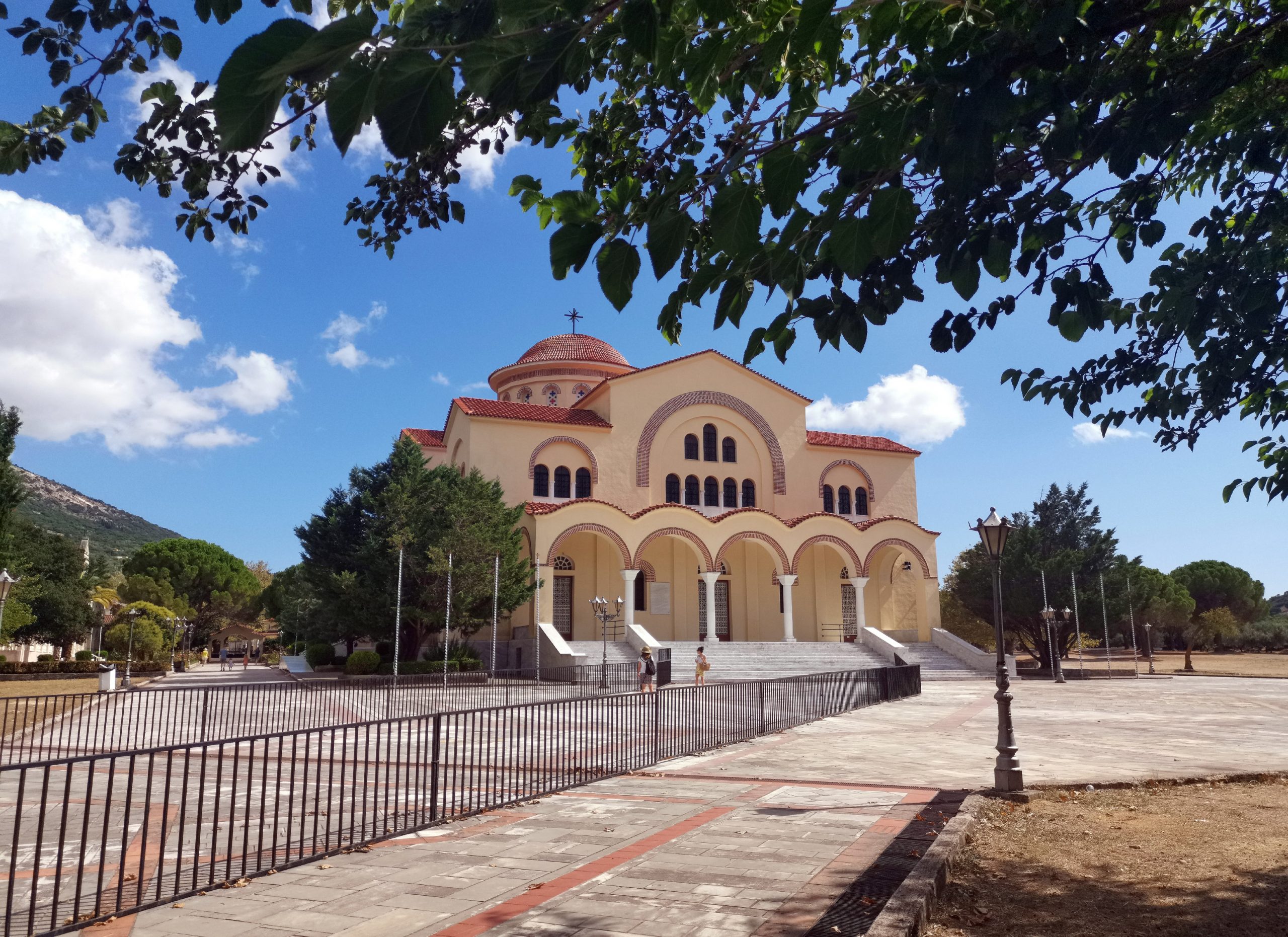
This sleepy island is blessed with natural beauty in abundance and confidently relies on such charms to satisfy its visitors; and it’s doing a grand job because people return time and again to this tranquil haven, and we could understand why upon admiring the scenery while driving north.
Surrounded by mountains and olive groves punctuated with elegant cypress trees, Fiskardo’s charm is epitomised by its compact little harbour, edged by restaurants and shops; it’s a lovely spot for more souvenir-hunting and a bite to eat, although prices seemed higher than elsewhere on the island. We enjoyed a late afternoon stroll before relaxing with a coffee while watching the plethora of yachts bobbing around in the bay.
Retracing our steps along the coast, we took a three-mile detour down the winding road to Assos, a picturesque village curling around the neck of a peninsula. The rays of golden light warmed our faces as we wandered around narrow streets of bougainvillea-draped houses, little restaurants and locals watching the world go by.
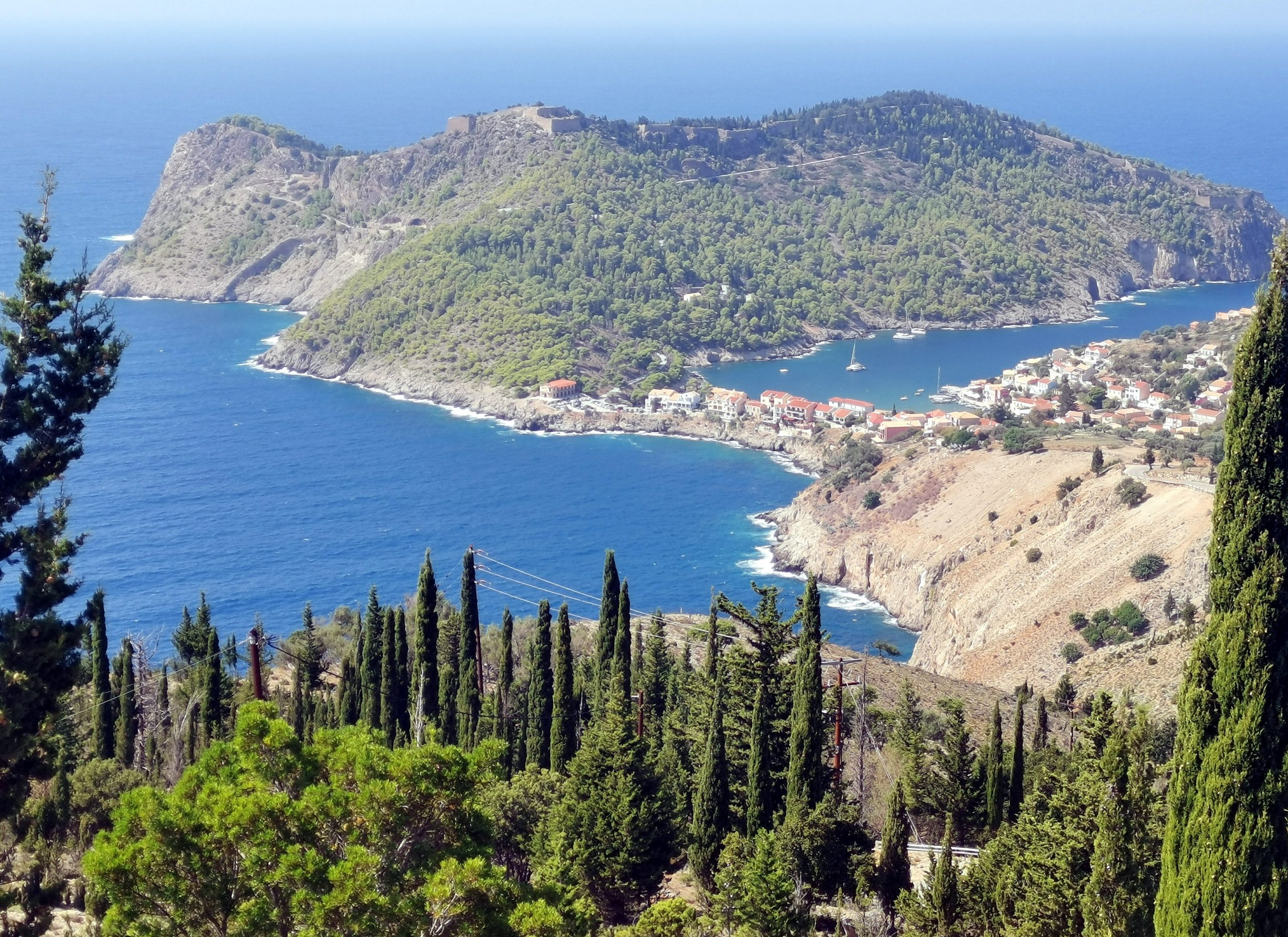
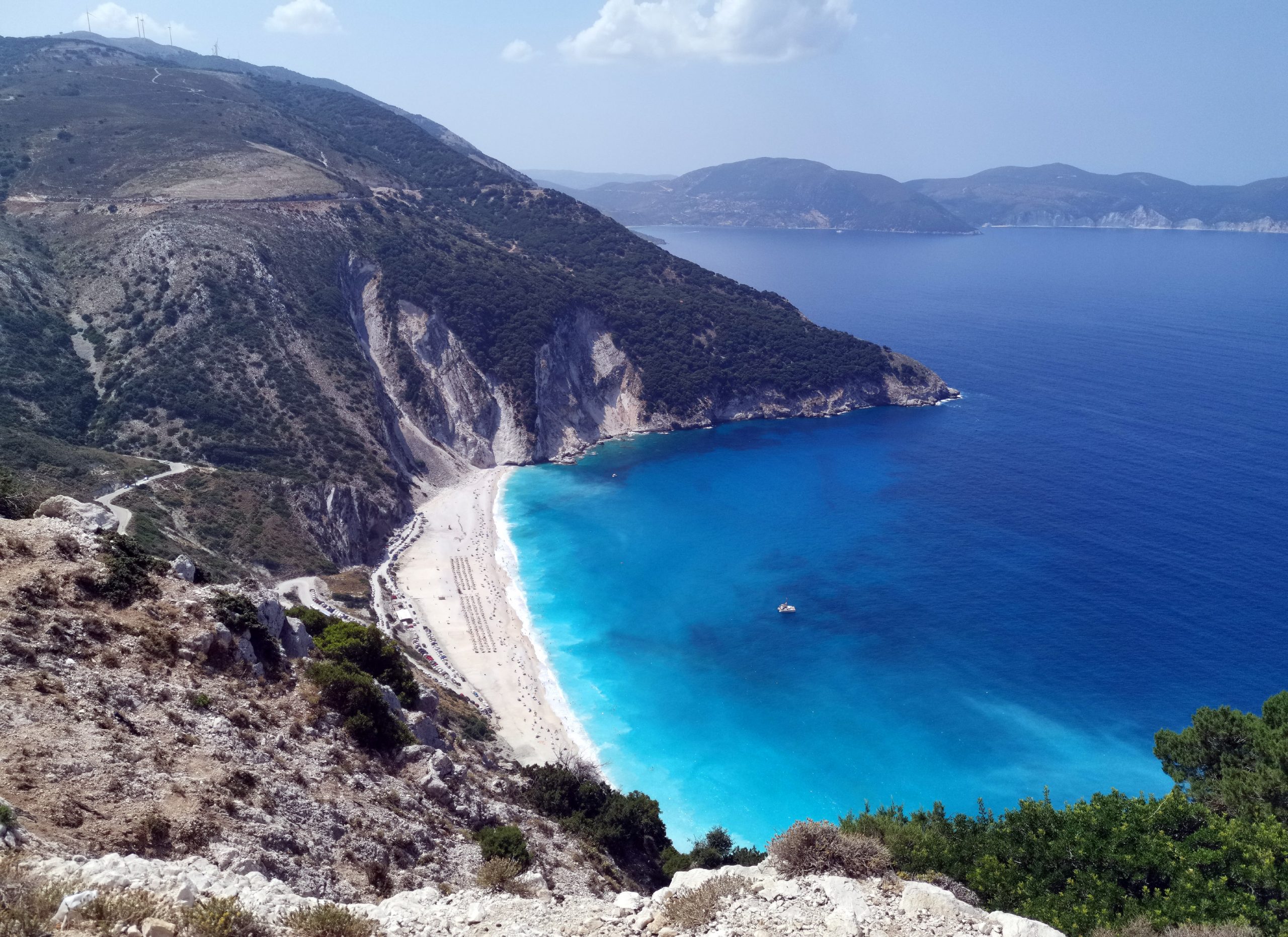
Next stop was the famous Myrtos Beach, apparently the world’s fifth-most photographed beach. From the vantage point on the main road, high above, the view of this crescent-shaped beach hugging steep cliffs is stunning. The white shingle beach shelves steeply and undercurrents mean care needs to be taken if swimming, but it’s ideal for sunbathing.
Blessed by beautiful blue skies throughout our week, most days involved sightseeing, swimming and lazing around on beaches, such as Antisamos, a location used in Captain Corelli’s Mandolin, although sand had to be imported to cover up the white stony beach.
It’s an idyllic spot where the turquoise waters of the Ionian Sea lap a horseshoe-shaped beach set against a backdrop of dense wooded hills. Like most of Kefalonia’s beaches – where burger bars, amusement arcades, blaring music and kiss-me-quick hats are unheard of – it’s unspoilt. We idled away a couple of hours relaxing and listening to the gentle, rhythmic sound of the water before heading down the coast, via a scenic drive through the mountains, to Poros.
Just outside the seaside town of Sami, we detoured to Drogarati Cave. Estimated to be 150 million years old, it was only discovered three centuries ago. Over 100-foot deep, large chambers are illuminated to reveal the splendour of the multicoloured stalactites and stalagmites. We edged along into a second chamber renowned for its outstanding acoustics – so much so it holds around 500 people and has been used for cultural events.
Climbing seemingly endless steps to the open air, we were hit by the heat of the late-afternoon sun but once in Poros, a little port where ferries link the island with, among others, Lefkas and the Greek mainland, a cooling sea breeze had picked up.
At a quayside restaurant, we sampled a glass of Robola of Kefalonia wine, whetting our appetites for next day’s visit to the Robola Cooperative Winery. On the slopes of Mount Ainos, the island’s highest mountain, vineyards grow as high as 2,500 feet, producing the grapes used in one of Greece’s most famous white wines.
Our week provided plenty of time for exploring, relaxing on beaches – Kamina was among our favourites – and making the most of time spent at our wonderfully-located villa.
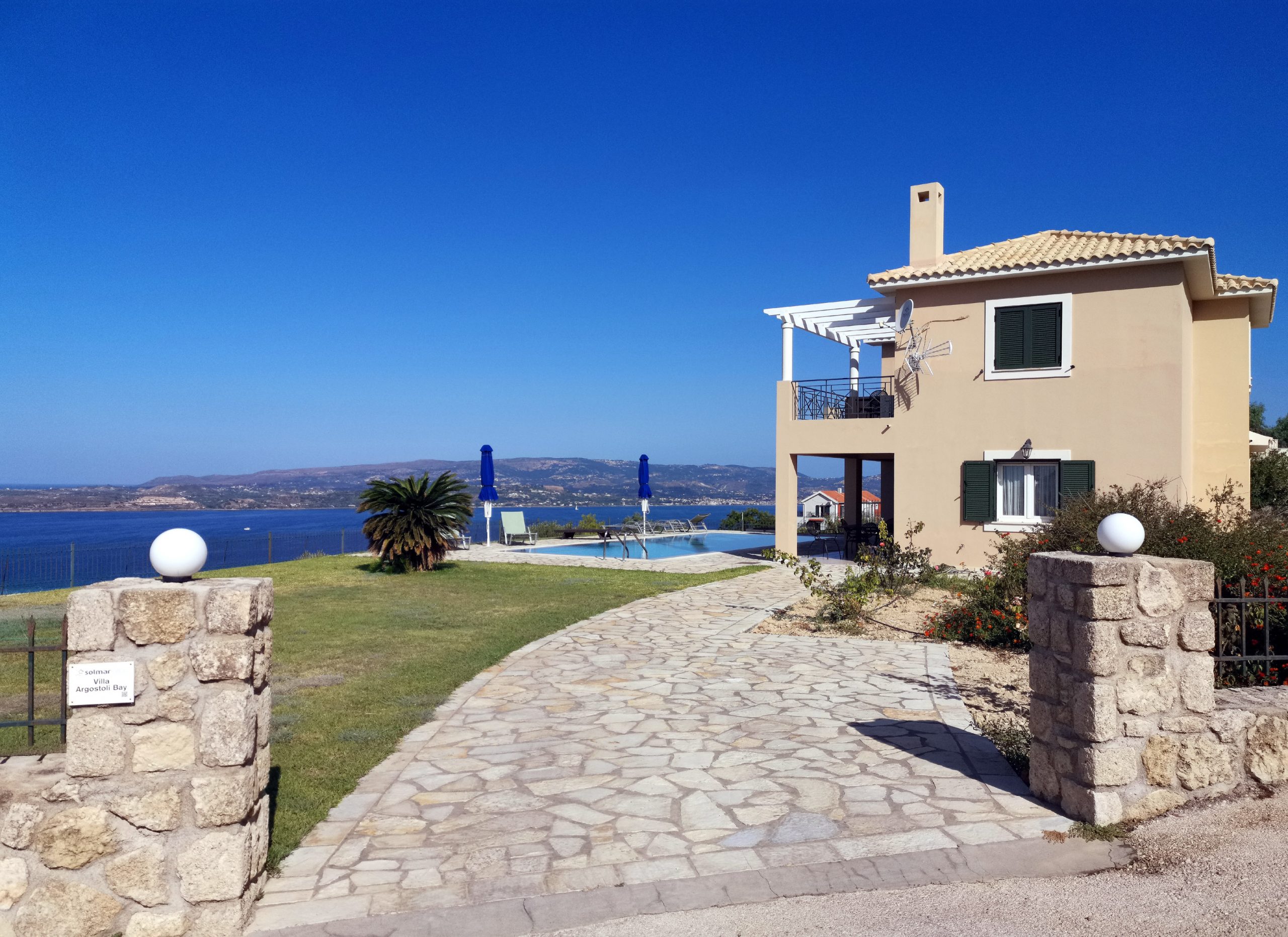
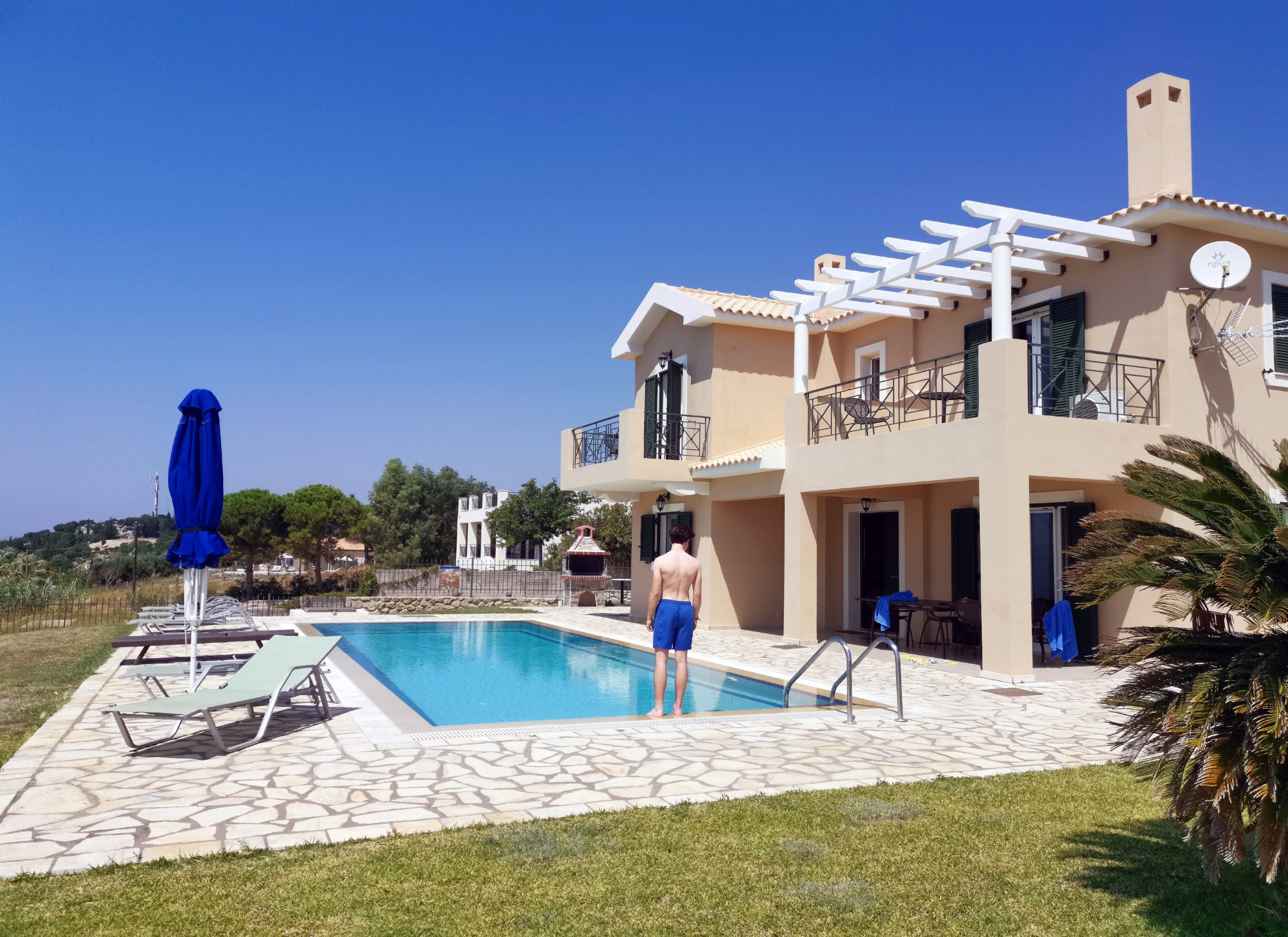
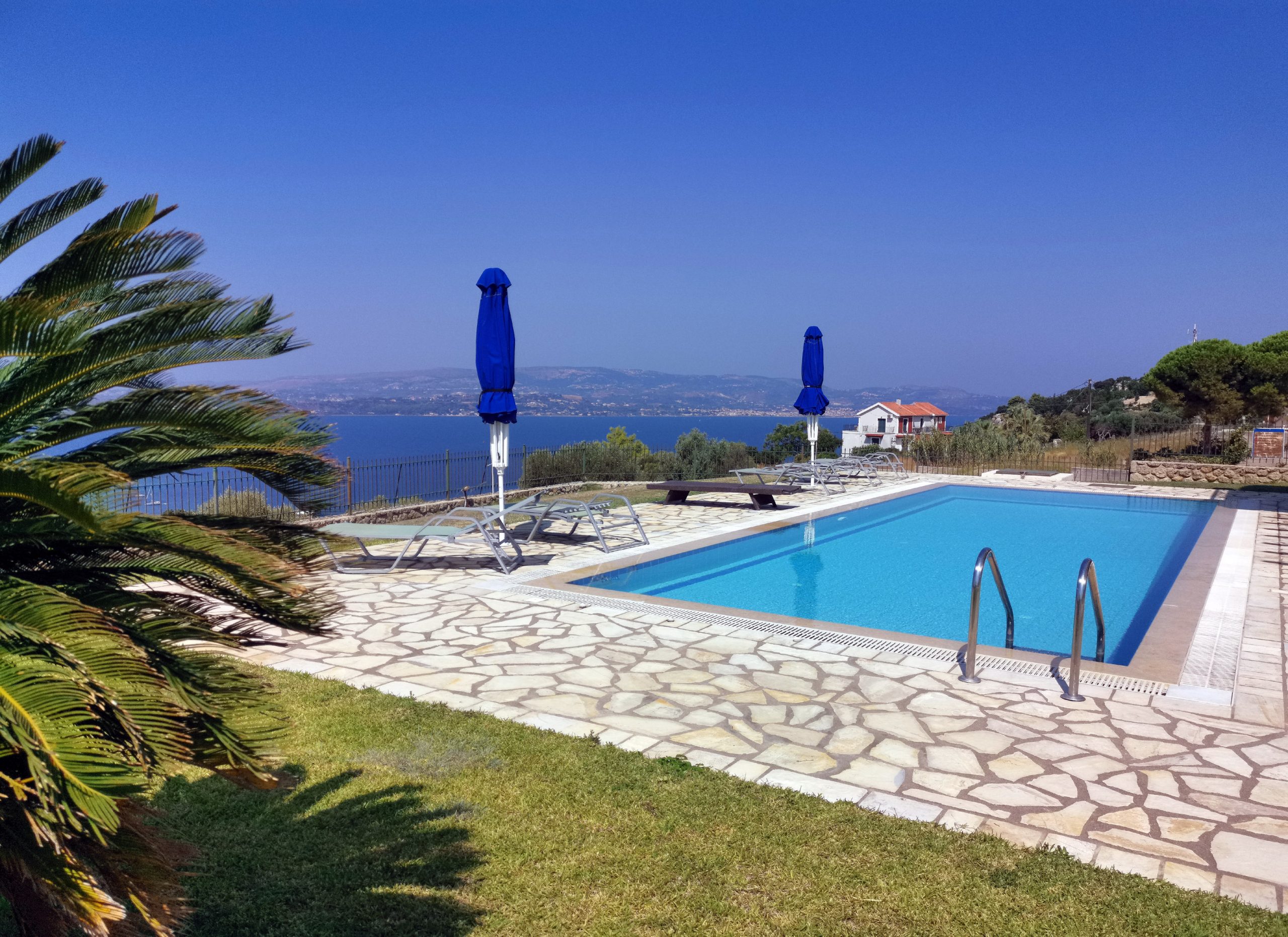
Just a short drive from the airport, above the resort of Lassi, the property overlooked the sea – oh, and what a stunning, interrupted view it was, too. With our own private pool, large terraced area, off-road parking, we couldn’t have asked for a better spot at which to spend our holiday.
Although parts of the interior were in need of, perhaps, a little updating, this three-bedroom property had everything we needed – even if the wifi was temperamental! One of the big pluses was air-con throughout.
Both bedrooms upstairs had their own balcony with, again, beautiful views out across the water while the downstairs bedroom had its own little terrace.
Often when we go self-catering, we encounter kitchens with little or inappropriate utensils/equipment. But that couldn’t be said of Villa Argostoli Bay which had everything we needed, including dishwasher, plenty of pots/pans, cutlery, crockery, etc. We’d certainly recommend this villa and wouldn’t have any qualms about returning.
If, like us, you enjoy holidays combining sightseeing with relaxing, then Kefalonia is ideal. Small enough to explore without feeling rushed, even on a seven-day break, and a multitude of beaches to choose from, it’s perfect for anyone wanting to experience the natural charms of the Greek Islands, free of commercialism, noise and the hustle and bustle of larger destinations.
More information:
We travelled with Jet2Holidays (www.jet2holidays.com), flying from Bristol. For parking at the airport, we recommend Holiday Extras, the market leader in UK airport parking, hotels, lounges and transfers.
Last year, most of their customers saved at least £100 on their airport parking versus the price they’d have paid on the gate. Booking airport parking means you can enjoy more holiday with less hassle. Plus with Flextras, if you need to cancel or amend you can without charge.
Seven days’ on-airport parking with Silverzone at Bristol Airport is available for £96.29, based on arrival on 12th October 2023.
For more information and to book, go to www.holidayextras.com or call 0800 316 5678.


Leave A Comment